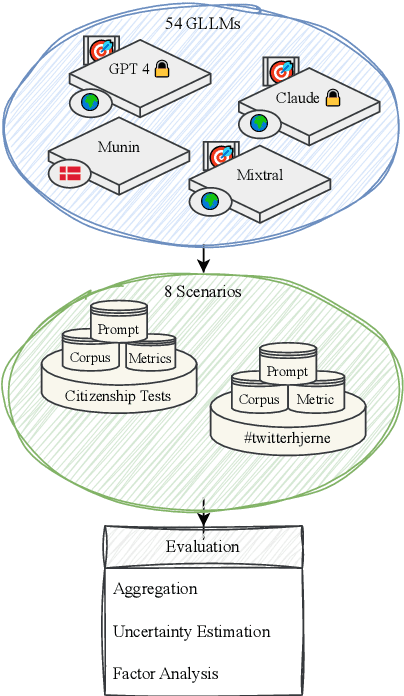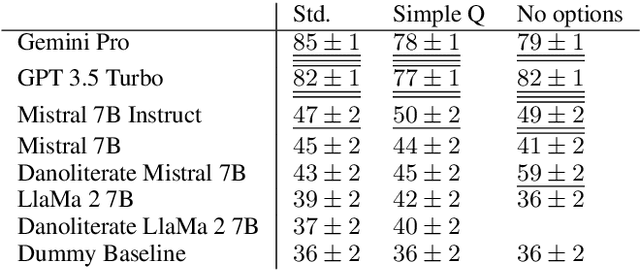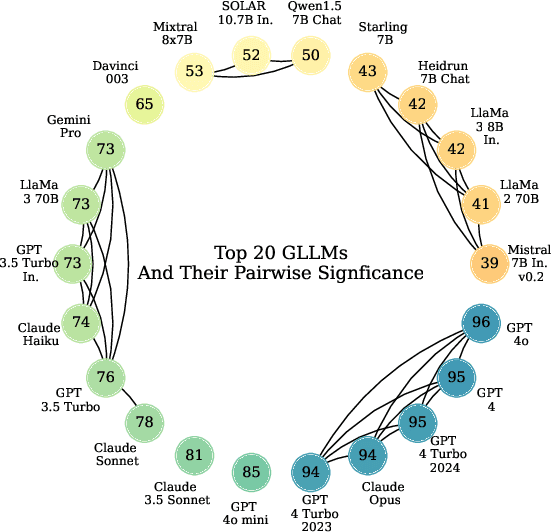Danoliteracy of Generative, Large Language Models
Paper and Code
Oct 30, 2024



The language technology moonshot moment of Generative, Large Language Models (GLLMs) was not limited to English: These models brought a surge of technological applications, investments and hype to low-resource languages as well. However, the capabilities of these models in languages such as Danish were until recently difficult to verify beyond qualitative demonstrations due to a lack of applicable evaluation corpora. We present a GLLM benchmark to evaluate Danoliteracy, a measure of Danish language and cultural competency, across eight diverse scenarios such Danish citizenship tests and abstractive social media question answering. This limited-size benchmark is found to produce a robust ranking that correlates to human feedback at $\rho \sim 0.8$ with GPT-4 and Claude Opus models achieving the highest rankings. Analyzing these model results across scenarios, we find one strong underlying factor explaining $95\%$ of scenario performance variance for GLLMs in Danish, suggesting a $g$ factor of model consistency in language adaption.
 Add to Chrome
Add to Chrome Add to Firefox
Add to Firefox Add to Edge
Add to Edge